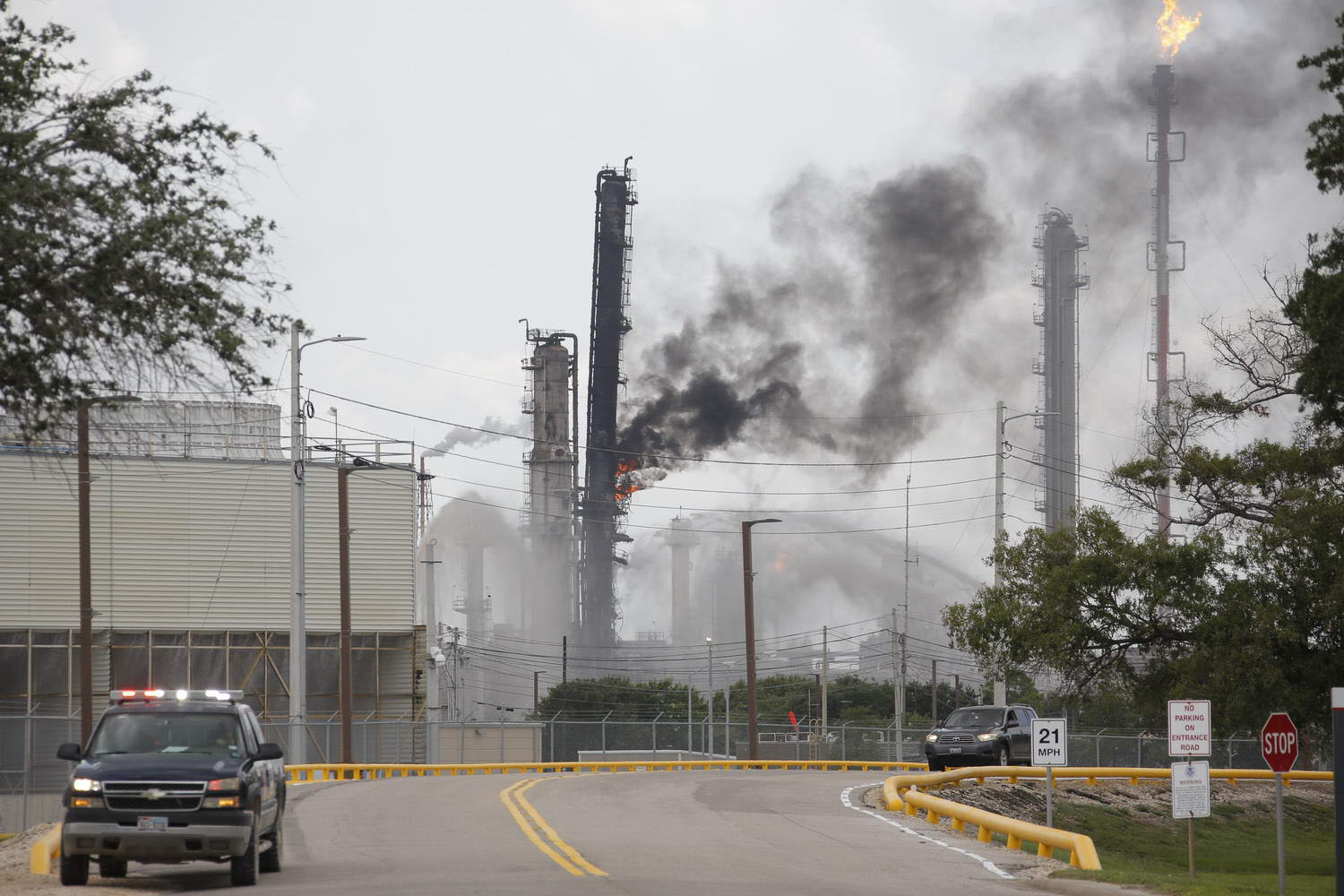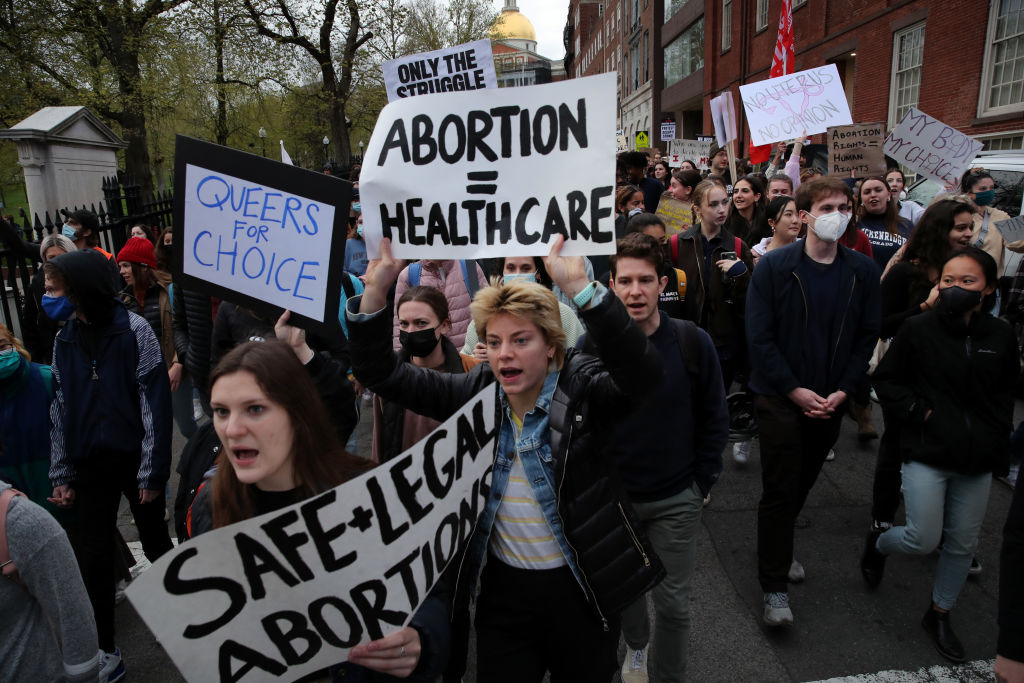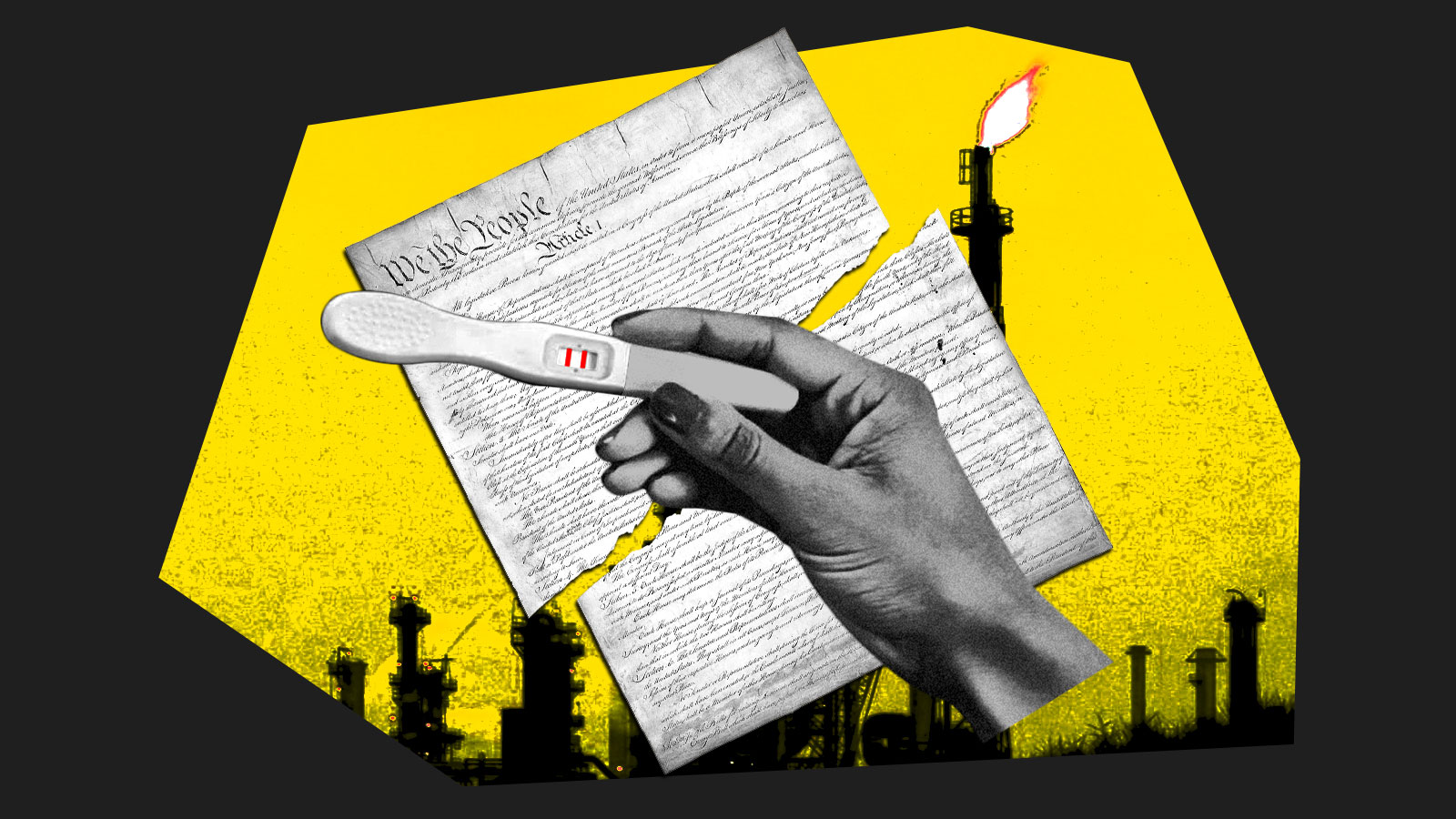For many pregnant people in Baytown, Texas, there aren’t a whole lot of options. That’s not just in terms of seeking services for reproductive health like abortion care, although there is certainly a dearth of local providers for that particular need. But the town, which sits on the eastern edge of Harris County, abutting the Houston Ship Channel and the San Jacinto River, is a known pollution hotspot. Keeping yourself and a developing fetus safe from toxic exposures can be a real challenge — and it’s just one example of how environmental and reproductive justice issues collide in “fenceline” communities.
Baytown’s legacy of pollution largely comes back to its high concentration of chemical facilities, including an ExxonMobil refinery that routinely spews hazardous chemicals and most recently caught fire in 2021. A notoriously leaky Superfund site that sits in the middle of the San Jacinto River contaminates the water and seafood in the area.
Petrochemical facilities in Harris County routinely emit “chemicals like benzene, toluene, and xylene that cause developmental and reproductive issues in human bodies,” said Nalleli Hidalgo, a community outreach and education liaison at the Texas Environmental Justice Advocacy Services, a Houston-based nonprofit.
While exposure to harmful chemicals isn’t good for anyone, pregnant people and children are especially vulnerable. Because children’s bodies are smaller and still developing, they can become sick faster and at lower levels of exposure. Similarly, pregnant people experience physical and hormonal changes that make them particularly sensitive to pollution. Research shows that those who live close to pollution — whether that’s from oil and gas fields or traffic on roads and highways — suffer worse maternal health outcomes compared to those further away, with higher likelihoods of developing hypertension, having low birth weight babies, and giving birth early. And of course, pregnancy itself can be dangerous without proper care – conditions like preeclampsia and maternal hemorrhage can potentially result in disability or death.
In parts of Baytown, the rate of maternal morbidity, a term that describes unexpected outcomes at the time of labor and delivery and lead to significant consequences for health, is almost double the state average. In a 2018 study, researchers at the University of Texas in Austin found that on average maternal morbidity rates in Texas in 2016 were about 17 per 1,000 deliveries. But in Baytown the rate was as high as 31 cases of severe maternal morbidity per 1,000 deliveries. The outcomes are more severe for people of color: Statewide maternal morbidity rates in Texas are 2.1 times higher for non-Hispanic Black women.

A lack of access to abortion care will likely exacerbate these outcomes. Last week, Politico published a draft opinion from a majority of the U.S. Supreme Court justices overturning Roe v. Wade, the precedent-setting legal ruling that made access to abortion the law of the land almost 50 years ago. While the opinion isn’t final, it seems likely that the Supreme Court will overturn Roe this summer, potentially allowing states to determine whether abortion is legal within their own borders.
If finalized, a ruling reversing Roe would place additional burdens on those living in environmental justice and frontline communities. About 25 states look set to ban abortions if Roe is overturned, and many of these states are in the South and along the Gulf Coast, where communities of color already face disproportionate environmental and climate burdens. These are also some of the very same states where access to healthcare and family planning services is limited, uninsured populations are high, and maternal health outcomes are lacking.
“We know that being low income and being a person of color in the U.S. predisposes you to having lower access to health care,” said Hailey Duncan, an environmental justice policy analyst with the nonprofit Moms Clean Air Force. The “compounding factors” of being a person of color, living next to a polluting site like an oil and gas facility, and not having access to health care has an effect on pregnancy, she said.
Texas is one of the 13 states that have “trigger laws” that will automatically completely ban abortion as soon as Roe v. Wade is overturned, which means that if you are a person seeking an abortion who lives in Baytown, you will have to travel out of state. (Texas already has a law on the books outlawing abortion past six weeks; reversing Roe would eliminate even this early window).
Since almost all states bordering Texas are also trigger law states, you will have to travel a significant distance. One Marketwatch piece on the price of an out-of-state abortion — including travel, lodging, and lost wages — found that they cost thousands of dollars. One patient, who had to seek a complicated second-trimester operation, ended up incurring costs upward of $14,000. Even a $400 emergency cost would force 18 percent of households to borrow to cover it, and 12 percent would be unable to cover it altogether.
There is a refrain in the abortion rights movement that legally banning the procedure does not effectively end the practice of abortion; it simply limits who will be able to get them, or get them without fear of prosecution or governmental interference. That is, those who have the freedom and financial means to travel, take time off work, and cover medical costs will always be able to get an abortion if needed. And those who don’t will be left with few, if any, options.

Research abounds showing that those who live in the immediate vicinity of polluting sites tend to be lower income and disproportionately people of color — populations that are more likely to need abortion care in the first place. According to the Guttmacher Institute, 75 percent of abortion patients are poor or low income, and 61 percent are people of color.
Furthermore, those in environmental justice communities are often unable to move due to financial constraints, low valuation of their property due to contamination, and social or family ties. In Baytown, for example, the median household income is around $54,000, lower than both the national and state median of Texas; the median home value is $126,500, one third of the national median home price; and seventeen percent of Baytown households live under the poverty line, 1.5 times the national poverty rate.
“Low-income households are much more likely to be women-led,” said Khalil Shahyd, managing director of environmental and equity strategies at the nonprofit Natural Resources Defense Council. “Whether we’re talking about the risk of natural disaster and flooding or displacement from homes, those homes that are typically at the highest risk are going to be lower-income homes, which are predominantly led by female heads of household.”
And then, not to pile further onto the embattled Baytown, there is the issue of climate impacts. The aftermath of Hurricane Harvey unveiled brutal inequities in community recovery from severe rain and flooding, where poor households in Harris County actually received less federal assistance than financially secure ones. In addition, it is the more socially vulnerable communities that live in the greater Houston area’s high-risk flood zones, as shown by ongoing Rice University research. Heat waves, which pose health risks to both pregnant people and their fetuses, are also predicted to become both more frequent and extreme along the already-sweltering Gulf Coast.
During Hurricane Harvey, pregnant people and those with young children had to swim to safety, recalled Erandi Treviño, a community organizer in Houston with Moms Clean Air Force. Basic necessities such as clean drinking water were hard to find. The added stress of trying to keep yourself and your child safe during a hurricane is harmful to pregnant people, she said. “Having to live under these conditions creates stress which turns into ailments.”
Hidalgo, with Texas Environmental Justice Advocacy Services, said that in the aftermath of hurricanes, she often has to remind pregnant people to avoid venturing outside if they smell unpleasant odors. Petrochemical facilities often shut down during hurricanes for safety reasons. When they start back up, they release millions of pounds of harmful chemicals. “We always remind people that if they plan to go outside for a walk or for a jog, to not go whenever there’s a chemical fire, or to look for other areas that might not be as contaminated because it’s a danger to not only them but also to their developing child,” she said.
The climate is changing, and everyone on Earth will have to deal with that reality as it develops. When activists emphasize that social, environmental, and economic inequities are all connected, it can feel overwhelming to grasp the vast and fundamental features of our society that must change. But it simply means that there is a version of our future in which additional burdens — barriers to reproductive healthcare, lack of affordable housing, stagnant wages — make all of the challenges of climate change acutely worse for already vulnerable communities, and there is one in which those burdens are alleviated by intentional, forward-thinking, and realistic policy.



